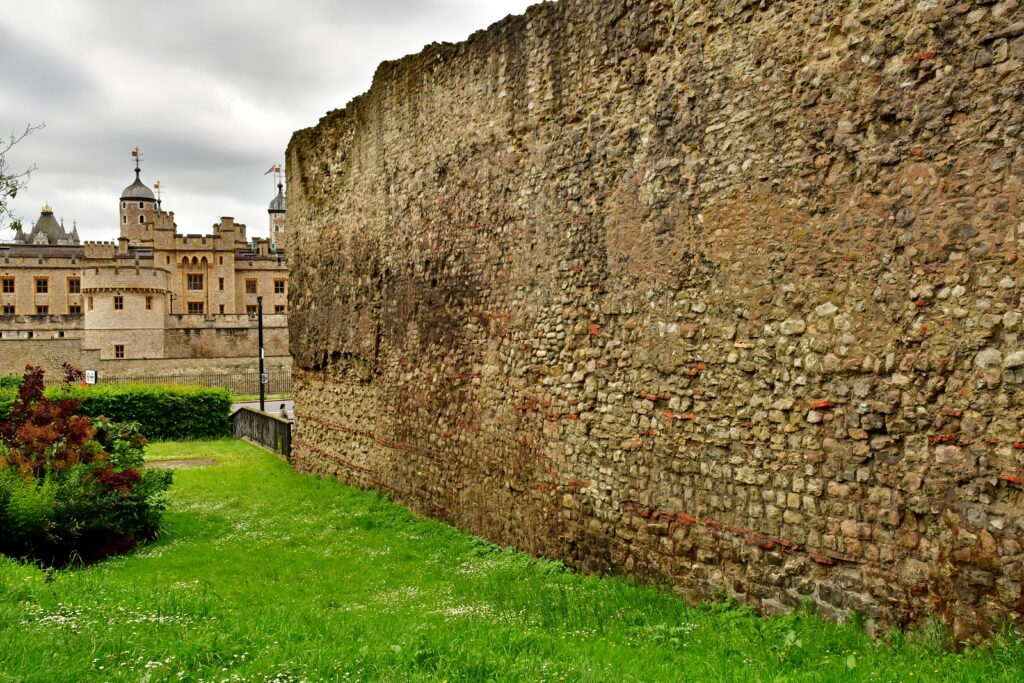London’s ancient city wall, known as the London Wall, has intrigued historians and locals for centuries with its mix of truth and folklore. Built by the Romans between 190 and 225 AD, the wall once signified the boundaries of Londinium, serving both as a fortification and a symbol of power. Over time, stories of hidden tunnels, secret treasures, and ghostly apparitions have taken root, adding layers of mystery to its already rich history.
Early legends speak of buried Roman soldiers, whose spirits are said to guard their resting place. These tales have been passed down through generations, creating an eerie aura around the remnants of the wall. Additionally, myths about hidden gates and passages leading to unknown parts of the city have captured the imaginations of many Londoners.
Despite the many legends, the physical remnants of the London Wall still stand today, tucked away amidst modern buildings and bustling streets. This juxtaposition of ancient and contemporary serves as a silent witness to the city’s ever-evolving landscape. Visiting these sites offers a tangible connection to the past, inviting one to ponder the true extent of the stories that surround this historic structure.
The Origins of London’s Ancient City Wall

London’s ancient city wall has roots tracing back to Roman times, with subsequent expansions carried out during the Saxon and Medieval periods. These developments played a crucial role in shaping the city’s defences and layout.
Roman Foundations
The ancient city wall of London was originally constructed by the Romans around 200 AD. This formidable structure was built primarily of stone and stood approximately 6 metres high and 2.5 metres thick, encircling the settlement then known as Londinium. The Roman wall extended for nearly 3 kilometres, providing necessary protection against invaders and defining the city’s boundaries.
Key elements of the Roman construction included the use of Kentish ragstone and limestone, along with occasional tiles for added strength. Roman engineers also incorporated gates and towers at strategic points, allowing for controlled access and better defence mechanisms. Bishopsgate, Aldgate, and Ludgate were among the notable gates.
The wall’s durability and strategic importance contributed significantly to Londinium’s development as a major trading hub in Roman Britain. The Roman foundations provided a blueprint that subsequent civilisations would follow and expand upon.
Saxon and Medieval Expansions
Following the decline of Roman rule, the wall’s role remained crucial during the Saxon period. By the 9th century, Saxon leaders repaired and reinforced the structure to defend against Viking invasions. This period saw the addition of earthen ramparts and wooden palisades, which complemented the original stone foundations.
By the Medieval era, particularly under Norman rule, the wall underwent significant enlargements and reinforcements. Stone was predominantly used to replace earlier wooden fortifications to withstand siege weaponry. Medieval gatehouses like Newgate and Cripplegate were constructed, often doubling as police centres and documentation offices.
The continuous upgrade and maintenance of the wall ensured it remained a vital component of London’s defences. It not only protected the city but also actively influenced its social and economic landscape, shaping the growth and layout of the medieval metropolis.
Myths and Legends

London’s ancient city wall has inspired numerous myths and legends throughout history. These stories have added an intriguing layer to the city’s rich historical narrative.
The Legend of Brutus of Troy
The legend of Brutus of Troy suggests that the origins of London are linked to an exiled Trojan hero. According to Geoffrey of Monmouth, Brutus arrived in Britain and declared it “New Troy,” which later became London.
He supposedly built the city’s first walls as a defence. This myth, though not historically verified, has deeply influenced the cultural identity of London and contributed to its sense of ancient grandeur. It remains a captivating story for visitors and locals alike.
The Ghosts of the Roman Wall
Many believe the Roman Wall is haunted by the spirits of soldiers and civilians who lived and perished within its confines. Sightings are often reported near the existing remnants of the wall, most notably by the Tower Hill area.
Witnesses have described hearing marching footsteps and seeing apparitions in Roman military attire. These ghost stories add an eerie charm to the ancient structure, sparking the curiosity of paranormal enthusiasts and historians who investigate these claims in hopes of uncovering more about the city’s hidden past.
Medieval Tales and Beliefs
During the medieval period, the wall was thought to possess protective and even magical qualities. There were beliefs that certain sections had the power to ward off evil spirits and diseases. Medieval citizens held rituals and ceremonies near the wall aimed at invoking these protective powers.
Legends of hidden treasures buried beneath the wall’s foundations also circulated. These tales spurred various, often unsuccessful, treasure hunts, further enriching the folklore surrounding London’s ancient city wall. Medieval stories continue to fascinate those interested in the mysteries of London’s past.
